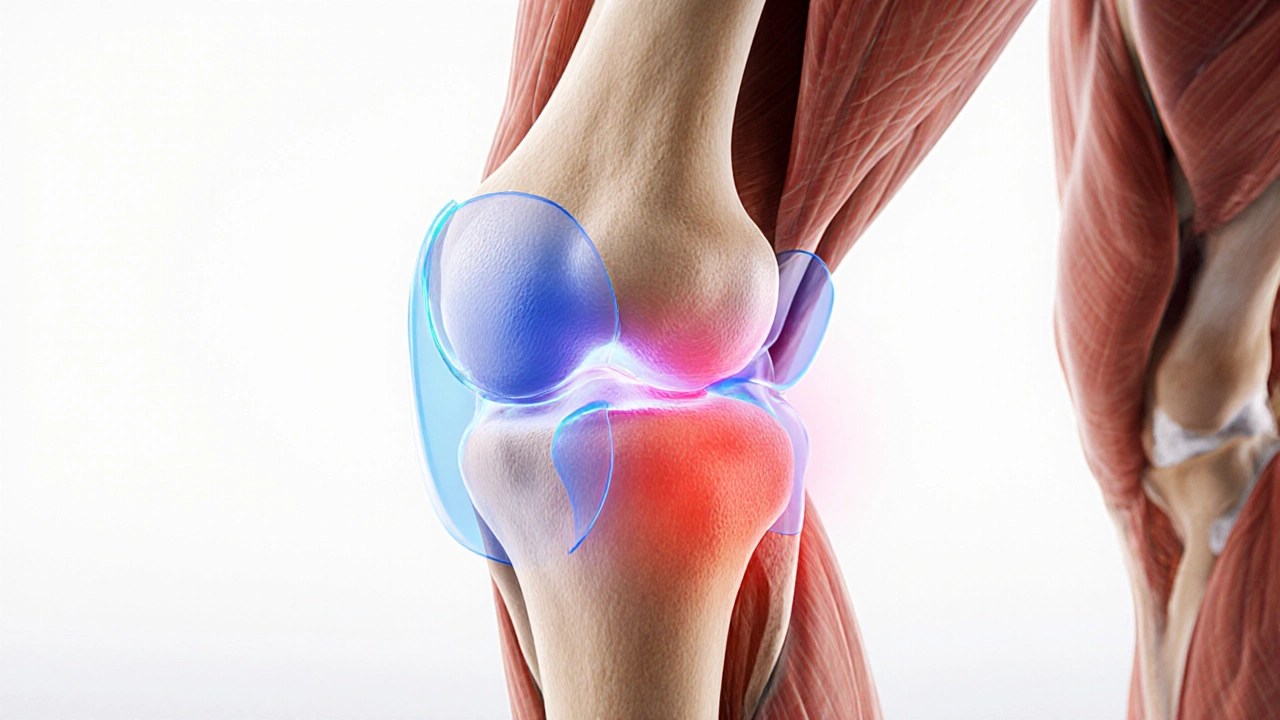Orthopedic Swelling Medication: How to Reduce Joint Swelling Fast
When dealing with orthopedic swelling medication, drugs and treatments aimed at lowering fluid build‑up around bones, joints and surrounding tissues. Also known as joint swelling meds, it helps athletes, seniors and anyone recovering from injury get back to motion quicker. One of the most common drug groups is non‑steroidal anti‑inflammatory drugs, oral or topical agents that block inflammatory pathways such as COX‑1 and COX‑2. Physical methods like ice therapy, applying cold packs to constrict blood vessels and limit swelling and compression therapy, using wraps, sleeves or bandages to apply gentle pressure and prevent fluid accumulation often work hand‑in‑hand with medication to speed up recovery.
So why does orthopedic swelling medication matter? First, swelling creates pressure that blocks normal joint movement and can damage cartilage if left unchecked. Second, the pain from inflammation signals the body to protect the area, which means you might avoid activity that’s actually needed for rehab. By targeting the swelling directly—through NSAIDs, ice, or compression—you break that cycle, allowing gentle motion, stronger muscles and better overall joint health. The typical treatment plan blends three key attributes: pharmacologic control (how well the drug reduces prostaglandins), thermal modulation (how ice lowers tissue temperature), and mechanical support (how compression limits fluid shift). When all three line up, patients often see a 30‑50% drop in swelling within the first 48 hours.
Common Approaches to Managing Orthopedic Swelling
1. NSAIDs: Ibuprofen, naproxen and diclofenac are the go‑to options for most minor to moderate swelling. They work best when taken with food to protect the stomach lining. For people with kidney issues or heart disease, a doctor may suggest a COX‑2‑selective agent like celecoxib, which spares the stomach but still curbs inflammation.
2. Ice Therapy: The rule of thumb is 15‑20 minutes on, 40‑60 minutes off. Ice packs, gel wraps or even a bag of frozen peas do the trick. The cold causes vasoconstriction, which reduces the leak of plasma into the tissue. Keep a thin cloth between skin and ice to avoid frostbite.
3. Compression Therapy: Elastic bandages, sleeves or pneumatic devices apply consistent pressure. The pressure should be firm but not so tight that it cuts circulation. For post‑operative knees, a graduated compression sleeve that’s tighter at the ankle and looser near the thigh works well.
4. Elevation: Raising the swollen limb above heart level for several hours a day uses gravity to pull excess fluid back toward the core. Combine elevation with ice for a double‑impact effect.
5. Movement and Rehab: Gentle range‑of‑motion exercises, started within 24‑48 hours, encourage lymphatic drainage. Physical therapists often pair low‑impact activities like stationary cycling with the medication regimen to keep muscles active without overloading the joint.
These approaches illustrate several semantic triples: “Orthopedic swelling medication encompasses NSAIDs,” “Effective swelling control requires ice therapy,” “Compression therapy reduces joint swelling,” and “Movement supports medication‑driven recovery.” Each element feeds into the next, creating a loop that shrinks swelling, eases pain and restores function faster.
Understanding how these tools interact helps you pick the right combo for your situation. If you’re dealing with a fresh sprain, ice and over‑the‑counter ibuprofen might be enough. For post‑surgical knees, a doctor‑prescribed NSAID, scheduled compression, and a structured physio program become essential. And if you have chronic arthritis, long‑term low‑dose NSAIDs plus daily compression sleeves can keep flare‑ups at bay without resorting to steroids.
Below you’ll find a curated list of articles that dive deeper into each of these topics—from detailed NSAID dosing charts to step‑by‑step ice‑pack tutorials and compression‑sleeve fitting guides. Whether you’re a patient, a caregiver or a health professional, the collection offers practical insights you can apply right away.






